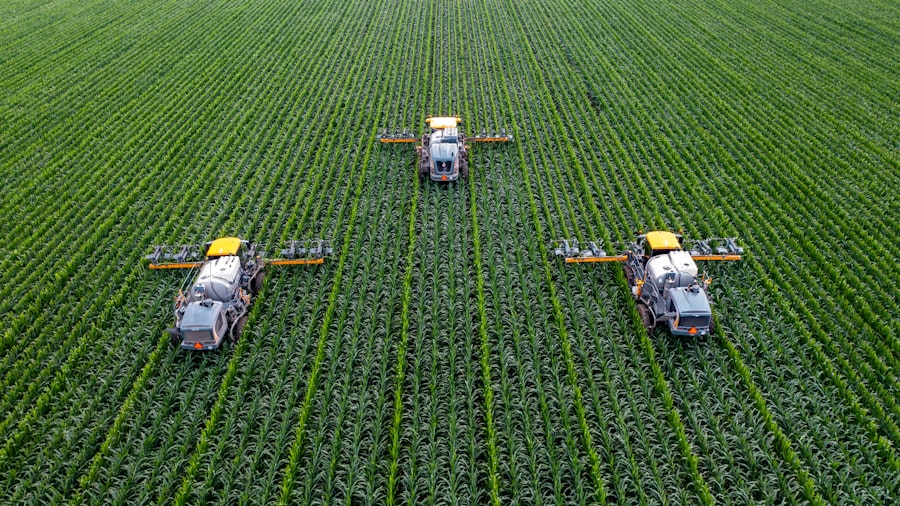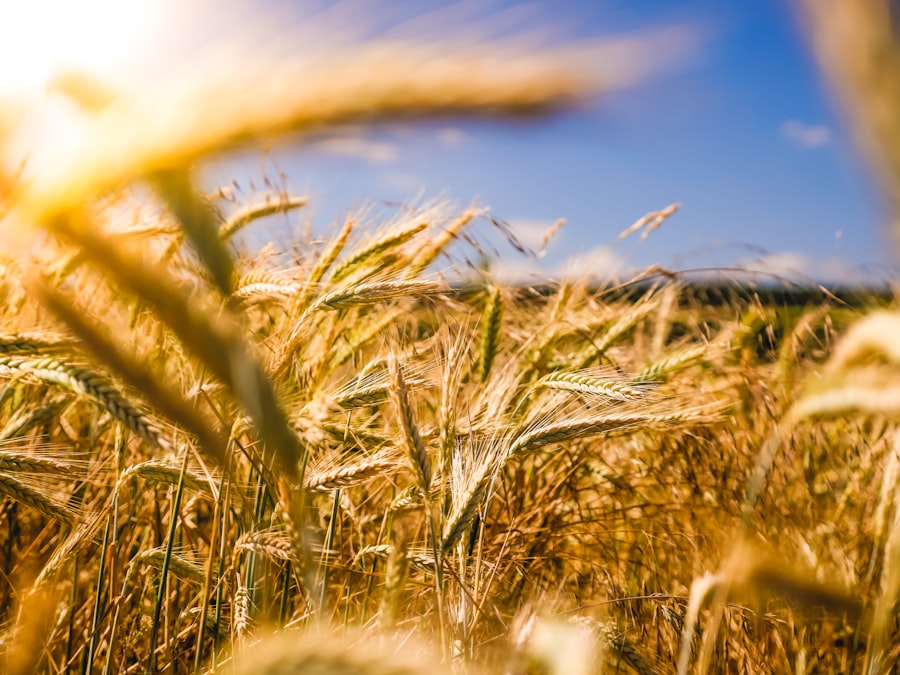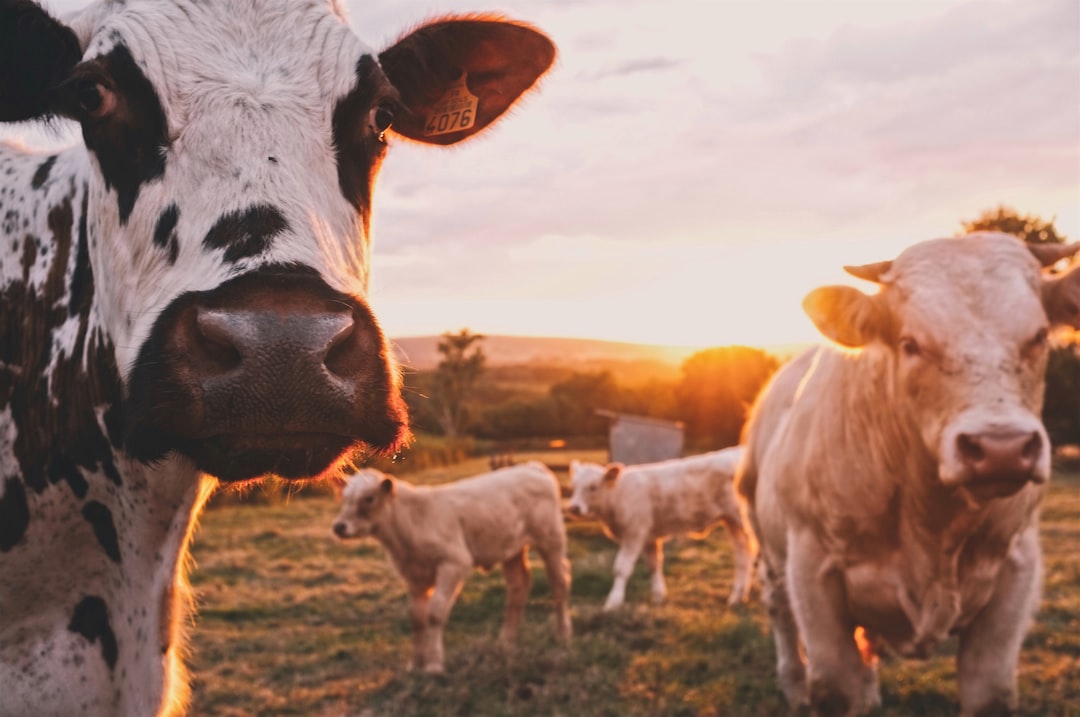American agriculture stands at a pivotal crossroads, where tradition meets innovation. The landscape of farming is undergoing a profound transformation, driven by technological advancements, environmental challenges, and shifting consumer preferences. This revolution is not merely about increasing crop yields or enhancing productivity; it encompasses a holistic approach to rethinking how food is produced, distributed, and consumed.
As the nation grapples with issues such as food security, sustainability, and climate change, the agricultural sector is embracing new methodologies that promise to reshape its future. The urgency for change in American agriculture is underscored by a growing population and the increasing demand for food.
This scenario necessitates a reevaluation of existing practices and the adoption of innovative solutions that can meet the needs of future generations while preserving the environment. The revolution in American agriculture is not just about technology; it is also about fostering resilience, sustainability, and adaptability in the face of unprecedented challenges.
Key Takeaways
- Technology plays a crucial role in revolutionizing American agriculture, from advancements in crop genetics to the rise of vertical farming.
- Sustainable farming practices are essential for the future of agriculture, as they help mitigate the impact of climate change and ensure long-term environmental and economic viability.
- Climate change has a significant impact on agriculture, leading to challenges such as extreme weather events and shifting growing seasons.
- Urban farming is gaining traction as a solution to food security and sustainability in densely populated areas, offering opportunities for local food production and reduced transportation emissions.
- Artificial intelligence and big data are transforming the way farming is done, allowing for more precise and efficient decision-making to optimize crop yields and resource management.
The Role of Technology in Farming
Technology has become an integral part of modern farming, revolutionizing traditional practices and introducing new efficiencies. From precision agriculture to automated machinery, technological innovations are enabling farmers to optimize their operations like never before. Drones equipped with sensors can monitor crop health from above, providing real-time data that allows farmers to make informed decisions about irrigation, fertilization, and pest control.
This level of precision minimizes waste and maximizes yield, ultimately leading to more sustainable farming practices. Moreover, advancements in biotechnology have paved the way for genetically modified organisms (GMOs) that are resistant to pests and diseases. These innovations not only enhance crop resilience but also reduce the reliance on chemical pesticides, contributing to a healthier ecosystem.
The integration of technology in farming extends beyond the fields; it encompasses data analytics and software solutions that help farmers manage their resources more effectively. By harnessing the power of technology, American agriculture is poised to meet the challenges of the 21st century head-on.
Sustainable Farming Practices

Sustainability has emerged as a guiding principle in modern agriculture, reflecting a growing awareness of the environmental impact of farming practices. Sustainable farming encompasses a range of techniques aimed at preserving natural resources while ensuring food security for future generations. Practices such as crop rotation, cover cropping, and agroforestry not only enhance soil health but also promote biodiversity and reduce erosion.
By adopting these methods, farmers can create resilient ecosystems that support both agricultural productivity and environmental stewardship. In addition to traditional sustainable practices, regenerative agriculture has gained traction as a holistic approach to farming. This method focuses on restoring soil health through practices that enhance carbon sequestration and promote biodiversity.
By prioritizing soil health, farmers can improve crop yields while simultaneously mitigating climate change impacts. The shift towards sustainable farming practices represents a fundamental change in how agriculture is perceived and practiced in America, emphasizing the importance of harmony between food production and environmental conservation.
The Impact of Climate Change on Agriculture
| Metrics | Impact |
|---|---|
| Temperature | Changes in temperature can affect crop growth and yield |
| Precipitation | Changes in precipitation patterns can lead to droughts or floods, impacting crop production |
| Pest and Disease Spread | Warmer temperatures can lead to the spread of pests and diseases, affecting crop health |
| Water Availability | Changes in water availability can impact irrigation and crop growth |
| Soil Quality | Climate change can lead to soil erosion and degradation, affecting crop productivity |
Climate change poses one of the most significant threats to global agriculture, with far-reaching implications for food production systems. Rising temperatures, shifting precipitation patterns, and increased frequency of extreme weather events are altering the agricultural landscape in profound ways. Farmers are facing challenges such as droughts that diminish water availability and floods that destroy crops, leading to unpredictable harvests and economic instability.
As climate change continues to unfold, its impact on agriculture will only intensify. To adapt to these changes, farmers must embrace resilience-building strategies that allow them to withstand climate-related shocks. This includes diversifying crops to reduce vulnerability to specific weather patterns and investing in water-efficient irrigation systems.
Additionally, research into climate-resilient crop varieties is essential for ensuring food security in an uncertain future. By proactively addressing the challenges posed by climate change, American agriculture can not only survive but thrive in an increasingly volatile environment.
The Future of Urban Farming
Urban farming is emerging as a dynamic solution to address food insecurity in densely populated areas while promoting sustainability. As cities continue to grow, the demand for fresh produce within urban environments has led to innovative approaches such as rooftop gardens, community farms, and vertical farming systems. These initiatives not only provide access to nutritious food but also contribute to reducing the carbon footprint associated with transporting food from rural areas to urban centers.
The future of urban farming holds immense potential for transforming city landscapes into green spaces that foster community engagement and environmental awareness. By integrating agriculture into urban planning, cities can create self-sufficient ecosystems that prioritize local food production. Furthermore, urban farms can serve as educational hubs, teaching residents about sustainable practices and fostering a deeper connection between people and their food sources.
As urban farming continues to gain traction, it represents a vital component of the broader revolution in American agriculture.
Advancements in Crop Genetics

Advancements in crop genetics are at the forefront of agricultural innovation, offering solutions to some of the most pressing challenges faced by farmers today. Through techniques such as CRISPR gene editing and traditional breeding methods, scientists are developing crop varieties that are more resilient to pests, diseases, and environmental stressors. These advancements not only enhance food security but also contribute to sustainable agricultural practices by reducing the need for chemical inputs.
The potential benefits of improved crop genetics extend beyond yield increases; they also encompass nutritional enhancements that can address public health concerns. Biofortification efforts aim to enrich staple crops with essential vitamins and minerals, helping combat malnutrition in vulnerable populations. As research continues to advance in this field, the possibilities for creating crops that meet both agricultural and nutritional needs are expanding rapidly.
The integration of cutting-edge genetic technologies into American agriculture promises a future where food production is both efficient and responsible.
The Rise of Vertical Farming
Vertical farming has emerged as a revolutionary approach to agriculture that maximizes space utilization while minimizing resource consumption. By growing crops in stacked layers within controlled environments, vertical farms can produce food year-round regardless of external weather conditions. This method not only conserves water but also reduces the need for pesticides and fertilizers, aligning with sustainable farming principles.
The rise of vertical farming is particularly significant in urban areas where land is scarce and demand for fresh produce is high. These innovative farms can be established in repurposed buildings or shipping containers, transforming underutilized spaces into productive agricultural hubs. Additionally, vertical farms often employ hydroponic or aeroponic systems that further enhance resource efficiency.
As this trend continues to grow, vertical farming represents a promising solution for addressing food security challenges while promoting sustainability in urban environments.
The Role of Artificial Intelligence in Agriculture
Artificial intelligence (AI) is revolutionizing various sectors, and agriculture is no exception. By leveraging machine learning algorithms and data analytics, AI technologies are enabling farmers to make data-driven decisions that enhance productivity and efficiency. From predicting crop yields based on historical data to optimizing irrigation schedules through real-time weather analysis, AI is transforming how farmers approach their operations.
Moreover, AI-powered tools can assist in pest detection and management by analyzing images captured by drones or cameras in the field. This proactive approach allows farmers to address issues before they escalate into significant problems, ultimately reducing crop losses and minimizing chemical usage. As AI continues to evolve, its integration into agricultural practices will likely lead to more precise farming methods that align with sustainability goals while ensuring food security.
Farming in the Age of Big Data
The advent of big data has ushered in a new era for agriculture, providing farmers with unprecedented insights into their operations. By collecting and analyzing vast amounts of data from various sources—such as soil sensors, weather stations, and market trends—farmers can make informed decisions that optimize their practices. This data-driven approach enables them to identify patterns and correlations that were previously difficult to discern.
Big data analytics can enhance everything from planting schedules to supply chain management. For instance, predictive analytics can help farmers anticipate market demands and adjust their production accordingly, reducing waste and maximizing profits. Additionally, data-driven insights can inform resource allocation decisions, ensuring that inputs such as water and fertilizers are used efficiently.
As farmers increasingly embrace big data technologies, they are better equipped to navigate the complexities of modern agriculture while contributing to sustainability efforts.
The Importance of Soil Health in Modern Agriculture
Soil health is foundational to successful agriculture; it serves as the bedrock upon which crops grow and thrive. Healthy soil is rich in organic matter, nutrients, and microorganisms that support plant growth while enhancing resilience against pests and diseases. However, modern agricultural practices have often led to soil degradation through overuse of chemical fertilizers and monoculture cropping systems.
Recognizing the importance of soil health has prompted a shift towards regenerative practices that prioritize soil restoration. Techniques such as cover cropping, reduced tillage, and composting contribute to building soil organic matter and improving its structure. By fostering healthy soils, farmers can enhance their productivity while simultaneously sequestering carbon and promoting biodiversity within their ecosystems.
The Future of Farming: Challenges and Opportunities
The future of farming presents both challenges and opportunities as American agriculture navigates an evolving landscape marked by technological advancements and environmental pressures. While issues such as climate change, resource scarcity, and market volatility pose significant hurdles for farmers, they also catalyze innovation and adaptation within the sector. As farmers embrace new technologies and sustainable practices, they have the potential to create resilient agricultural systems capable of meeting future demands.
Collaboration among stakeholders—including farmers, researchers, policymakers, and consumers—will be essential for fostering an environment conducive to innovation. By prioritizing sustainability and embracing change, American agriculture can not only overcome its challenges but also seize opportunities for growth and transformation in an increasingly complex world. In conclusion, revolutionizing American agriculture requires a multifaceted approach that integrates technology with sustainable practices while addressing pressing global challenges such as climate change and food security.
As the sector evolves, it holds immense potential for creating a more resilient and sustainable food system that benefits both people and the planet.
The future of American farming is poised for significant transformation as technological advancements and sustainable practices become increasingly integral to agricultural operations. A related article that delves into these changes can be found on How Wealth Grows, which explores the intersection of innovation and agriculture. This article provides insights into how modern farming techniques are reshaping the industry, ensuring food security, and promoting environmental stewardship. For a deeper understanding of these developments, you can read more about it in the article on How Wealth Grows.
WATCH THIS! 🫣Why Wall Street Is Buying Up America’s Farmland (And Why It Should Terrify You)
FAQs
What is the future of American farming?
The future of American farming is expected to be shaped by technological advancements, sustainable practices, and changing consumer preferences.
How will technology impact the future of American farming?
Technology is expected to play a significant role in the future of American farming, with advancements in precision agriculture, automation, and data analytics leading to increased efficiency and productivity.
What are some sustainable practices that will be important for the future of American farming?
Sustainable practices such as organic farming, regenerative agriculture, and conservation tillage are expected to be important for the future of American farming, as they help to minimize environmental impact and preserve natural resources.
How will changing consumer preferences impact the future of American farming?
Changing consumer preferences, including a growing demand for organic and locally sourced products, are expected to influence the future of American farming, leading to shifts in production methods and marketing strategies.
What are some challenges facing the future of American farming?
Challenges facing the future of American farming include climate change, water scarcity, and the need to attract a new generation of farmers. Adapting to these challenges will be crucial for the long-term sustainability of the industry.
